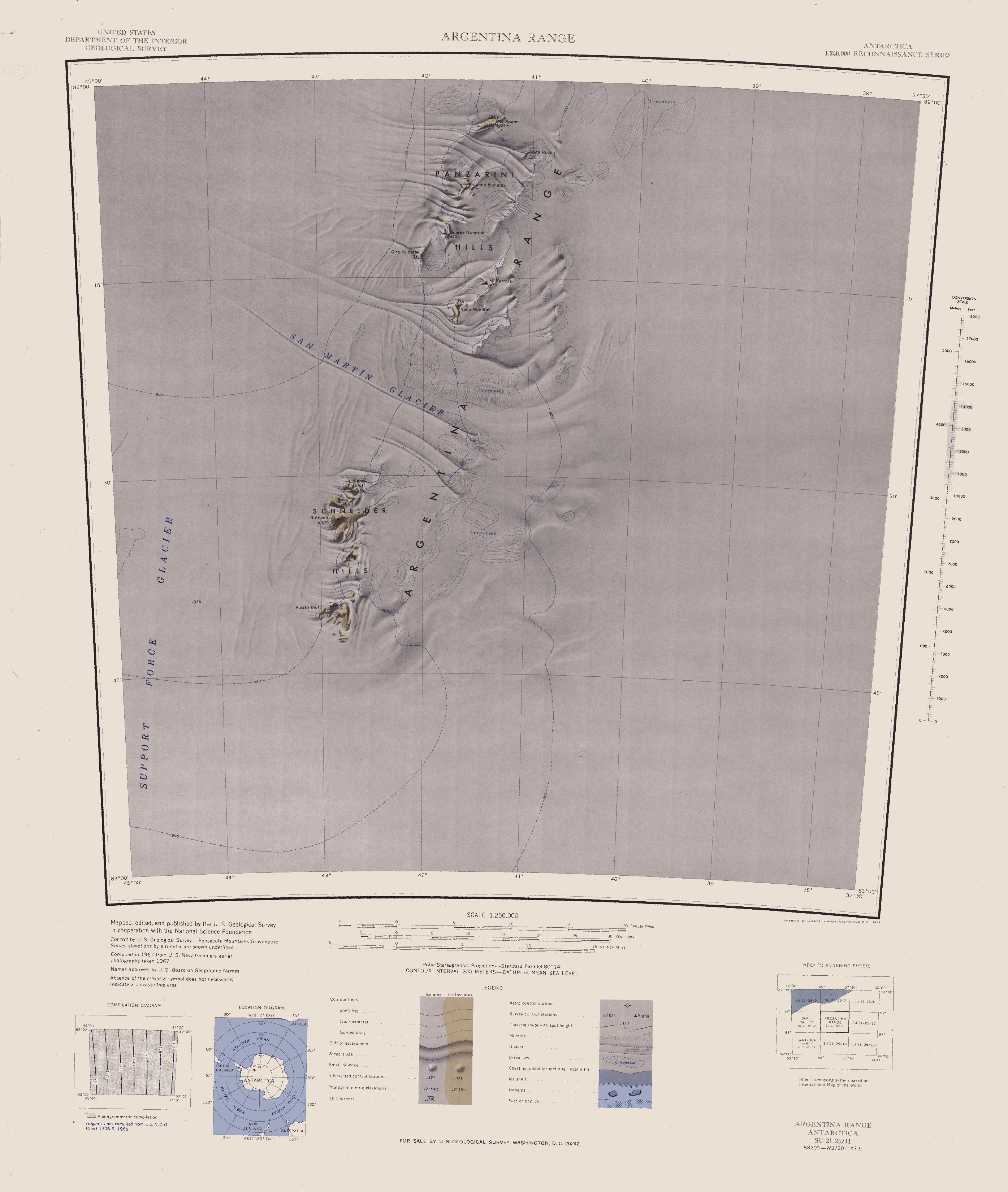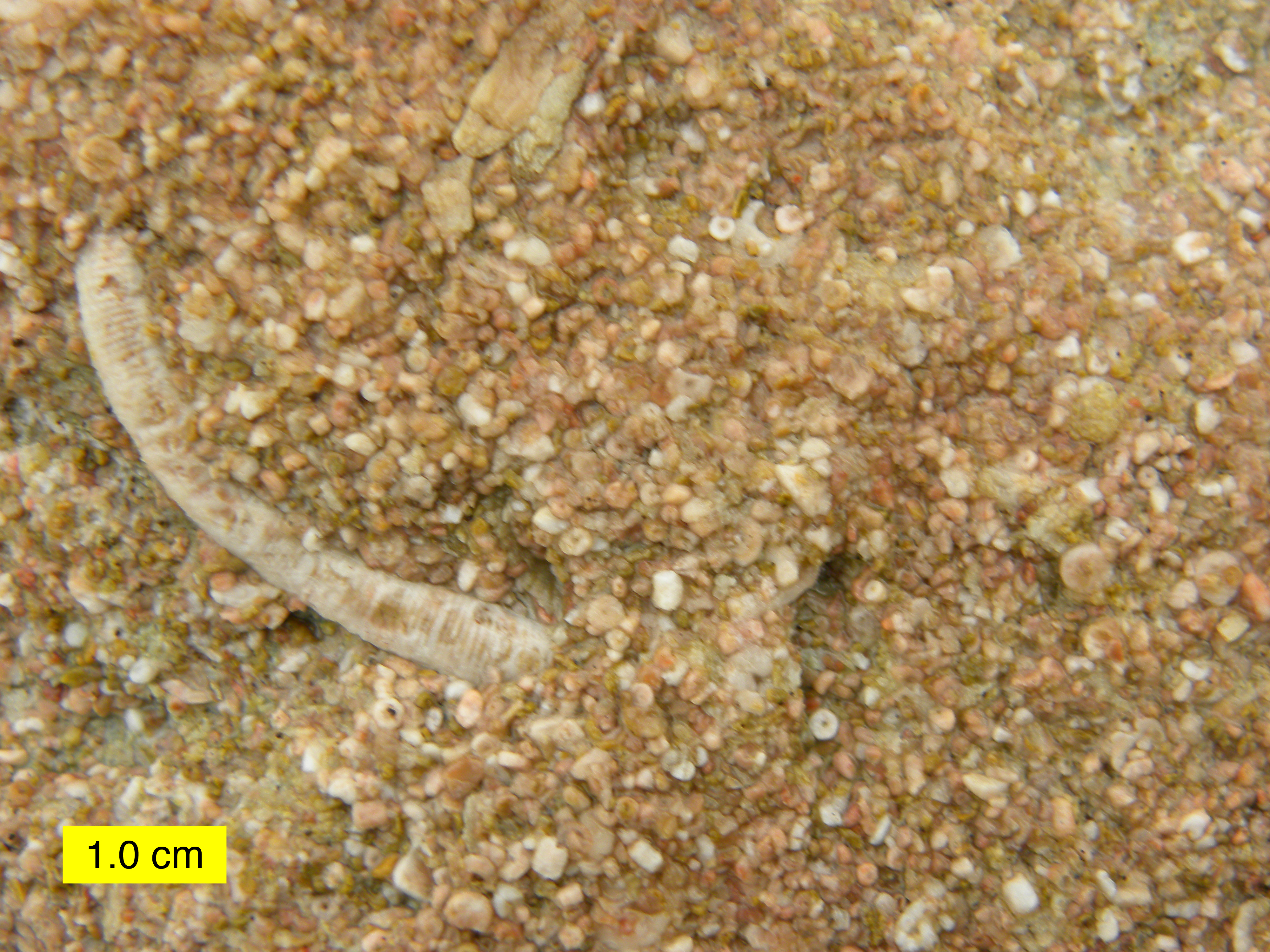|
Ruthven Bluff
Ruthven Bluff () is a large rock bluff 1 nautical mile (1.9 km) south of Sosa Bluff in the Schneider Hills portion of the Argentina Range, Pensacola Mountains. Mapped by United States Geological Survey (USGS) from surveys and U.S. Navy air photos, 1956–67. Named by Advisory Committee on Antarctic Names (US-ACAN) for Richard W. Ruthven, USGS surveyor who visited the bluff in the 1965–66 season. Geology Ruthven Bluff is an approximately high bluff of Cambrian limestone. This bluff exposes a thick archaeocyathid reef composed of massive boundstone. At this locality, the boundstone contains numerous irregular cavities that are in diameter. These cavities are lined with fibrous cement and filled with either ferroancalcite or internal sediment. At Ruthven Bluff, alternating beds of grainstone and burrowed packstone encase this reef. The packstone beds contain subparallel zones of calcite-filled burrow file:Chipmunk-burrow (exits).jpg, An eastern chipmunk at the entrance ... [...More Info...] [...Related Items...] OR: [Wikipedia] [Google] [Baidu] |
Sosa Bluff
The Argentina Range () is a range of rock peaks and bluffs, long, lying east of the northern part of Forrestal Range in the northeastern portion of the Pensacola Mountains of Antarctica. Discovery and name The Argentina Range was discovered and photographed on January 13, 1956, in the course of a United States Navy transcontinental nonstop plane flight from McMurdo Sound to Weddell Sea and return. It was named by the United States Advisory Committee on Antarctic Names (US-ACAN) after Argentina, which for many years from 1955 maintained a scientific station on the Filchner Ice Shelf at the Belgrano I Base, General Belgrano or Ellsworth Station site. The entire Pensacola Mountains were mapped by United States Geological Survey (1863) in 1967 and 1968 from ground surveys and from United States Navy tricameral photographs taken in 1964. Location The Argentina Range lies between the Support Force Glacier to the west, which separates it from the Forrestal Range, and the East Antar ... [...More Info...] [...Related Items...] OR: [Wikipedia] [Google] [Baidu] |
Schneider Hills
The Argentina Range () is a range of rock peaks and bluffs, long, lying east of the northern part of Forrestal Range in the northeastern portion of the Pensacola Mountains of Antarctica. Discovery and name The Argentina Range was discovered and photographed on January 13, 1956, in the course of a United States Navy transcontinental nonstop plane flight from McMurdo Sound to Weddell Sea and return. It was named by the United States Advisory Committee on Antarctic Names (US-ACAN) after Argentina, which for many years from 1955 maintained a scientific station on the Filchner Ice Shelf at the General Belgrano or Ellsworth Station site. The entire Pensacola Mountains were mapped by United States Geological Survey (1863) in 1967 and 1968 from ground surveys and from United States Navy tricameral photographs taken in 1964. Location The Argentina Range lies between the Support Force Glacier to the west, which separates it from the Forrestal Range, and the East Antarctic Ice She ... [...More Info...] [...Related Items...] OR: [Wikipedia] [Google] [Baidu] |
Pensacola Mountains
The Pensacola Mountains () are a large group of mountain ranges and peaks that extend in a northeast–southwest direction in the Transantarctic Mountains System, Queen Elizabeth Land region of Antarctica. They comprise the Argentina Range, Forrestal Range, Dufek Massif, Cordiner Peaks, Neptune Range, Patuxent Range, Rambo Nunataks and Pecora Escarpment. These mountain units lie astride the extensive Foundation Ice Stream and Support Force Glacier which drain northward to the Ronne Ice Shelf. Discovery and naming The Pensacola Mountains were discovered and photographed on 13 January 1956 in the course of a transcontinental nonstop plane flight by personnel of United States Navy Operation Deep Freeze I from McMurdo Sound to Weddell Sea and return. They were named by the United States Advisory Committee on Antarctic Names (US-ACAN) for the U.S. Naval Air Station, Pensacola, Florida, in commemoration of the historic role of that establishment in training aviators of the United St ... [...More Info...] [...Related Items...] OR: [Wikipedia] [Google] [Baidu] |
United States Geological Survey
The United States Geological Survey (USGS), founded as the Geological Survey, is an agency of the U.S. Department of the Interior whose work spans the disciplines of biology, geography, geology, and hydrology. The agency was founded on March 3, 1879, to study the landscape of the United States, its natural resources, and the natural hazards that threaten it. The agency also makes maps of planets and moons, based on data from U.S. space probes. The sole scientific agency of the U.S. Department of the Interior, USGS is a fact-finding research organization with no regulatory responsibility. It is headquartered in Reston, Virginia, with major offices near Lakewood, Colorado; at the Denver Federal Center; and in NASA Research Park in California. In 2009, it employed about 8,670 people. The current motto of the USGS, in use since August 1997, is "science for a changing world". The agency's previous slogan, adopted on its hundredth anniversary, was "Earth Science in the Pub ... [...More Info...] [...Related Items...] OR: [Wikipedia] [Google] [Baidu] |
Advisory Committee On Antarctic Names
The Advisory Committee on Antarctic Names (ACAN or US-ACAN) is an advisory committee of the United States Board on Geographic Names responsible for recommending commemorative names for features in Antarctica. History The committee was established in 1943 as the Special Committee on Antarctic Names (SCAN). It became the Advisory Committee on Antarctic Names in 1947. Fred G. Alberts was Secretary of the Committee from 1949 to 1980. By 1959, a structured nomenclature was reached, allowing for further exploration, structured mapping of the region and a unique naming system. A 1990 ACAN gazeeter of Antarctica listed 16,000 names. Description The United States does not recognise territorial boundaries within Antarctica, so ACAN assigns names to features anywhere within the continent, in consultation with other national nomenclature bodies where appropriate, as defined by the Antarctic Treaty System. The research and staff support for the ACAN is provided by the United States Geologi ... [...More Info...] [...Related Items...] OR: [Wikipedia] [Google] [Baidu] |
Cambrian
The Cambrian ( ) is the first geological period of the Paleozoic Era, and the Phanerozoic Eon. The Cambrian lasted 51.95 million years from the end of the preceding Ediacaran period 538.8 Ma (million years ago) to the beginning of the Ordovician Period 486.85 Ma. Most of the continents lay in the southern hemisphere surrounded by the vast Panthalassa Ocean. The assembly of Gondwana during the Ediacaran and early Cambrian led to the development of new convergent plate boundaries and continental-margin arc magmatism along its margins that helped drive up global temperatures. Laurentia lay across the equator, separated from Gondwana by the opening Iapetus Ocean. The Cambrian marked a profound change in life on Earth; prior to the Period, the majority of living organisms were small, unicellular and poorly preserved. Complex, multicellular organisms gradually became more common during the Ediacaran, but it was not until the Cambrian that fossil diversity seems to rapidly ... [...More Info...] [...Related Items...] OR: [Wikipedia] [Google] [Baidu] |
Limestone
Limestone is a type of carbonate rock, carbonate sedimentary rock which is the main source of the material Lime (material), lime. It is composed mostly of the minerals calcite and aragonite, which are different Polymorphism (materials science), crystal forms of calcium carbonate . Limestone forms when these minerals Precipitation (chemistry), precipitate out of water containing dissolved calcium. This can take place through both biological and nonbiological processes, though biological processes, such as the accumulation of corals and shells in the sea, have likely been more important for the last 540 million years. Limestone often contains fossils which provide scientists with information on ancient environments and on the evolution of life. About 20% to 25% of sedimentary rock is carbonate rock, and most of this is limestone. The remaining carbonate rock is mostly Dolomite (rock), dolomite, a closely related rock, which contains a high percentage of the mineral Dolomite (mine ... [...More Info...] [...Related Items...] OR: [Wikipedia] [Google] [Baidu] |
Archaeocyathid
Archaeocyatha (), 'ancient cups') is a taxon of extinct, sessile, reef-building marine sponges that lived in warm tropical and subtropical waters during the Cambrian Period. It is believed that the centre of the Archaeocyatha origin is now located in East Siberia, where they are first known from the beginning of the Tommotian Age of the Cambrian, 525 million years ago ( mya). In other regions of the world, they appeared much later, during the Atdabanian, and quickly diversified into over a hundred families. They became the planet's first reef-building animals and are an index fossil for the Lower Cambrian worldwide. Preservation The remains of Archaeocyatha are mostly preserved as carbonate structures in a limestone matrix. This means that the fossils cannot be chemically or mechanically isolated, save for some specimens that have already eroded out of their matrices, and their morphology has to be determined from thin cuts of the stone in which they were preserved. G ... [...More Info...] [...Related Items...] OR: [Wikipedia] [Google] [Baidu] |
Reef
A reef is a ridge or shoal of rock, coral, or similar relatively stable material lying beneath the surface of a natural body of water. Many reefs result from natural, abiotic component, abiotic (non-living) processes such as deposition (geology), deposition of sand or wave erosion planning down rock outcrops. However, reefs such as the coral reefs of tropical waters are formed by biotic component, biotic (living) processes, dominated by corals and coralline algae. Artificial reefs, such as shipwrecks and other man-made underwater structures, may occur intentionally or as the result of an accident. These are sometimes designed to increase the physical complexity of featureless sand bottoms to attract a more diverse range of organisms. They provide shelter to various aquatic animals which help prevent extinction. Another reason reefs are put in place is for aquaculture, and fish farmers who are looking to improve their businesses sometimes invest in them. Reefs are often quite n ... [...More Info...] [...Related Items...] OR: [Wikipedia] [Google] [Baidu] |
Boundstone (rock)
A boundstone is a special type of carbonate rock in the Dunham classification. Description In the original classification by Dunham (1962), boundstones are defined as "carbonate rocks showing signs of being bound during deposition .. The signs of binding are specific and occur within the sample being classified". In the modified Dunham classification by Embry and Klovan (1971), boundstones in the sense of Dunham are subdivided into bafflestones, bindstones and framestone A framestone is a special type of carbonate rock in the Dunham classification The Dunham classification system for Carbonate minerals, carbonate sedimentary rocks was originally devised by Robert J. Dunham (1924–1994) in 1962, and subsequently ...s. The term "boundstone" is retained for authochthonous limestones in which the specific mode of organic binding cannot be recognized. Lokier and Al Nunaibi (2016) define boundstone as "an autochthonous carbonate-dominated rock in which there is any form of evide ... [...More Info...] [...Related Items...] OR: [Wikipedia] [Google] [Baidu] |
Grainstone
Under the Dunham classification (Dunham, 1962) system of limestones, a grainstone is defined as a grain-supported carbonate rock that contains less than 1% mud-grade material. This definition has recently been clarified as ''a carbonate-dominated rock that does not contain any carbonate mud and where less than 10% of the components are larger than 2 mm.'' The spaces between grains may be empty (pores) or filled by cement. The identification of grainstone The presence of any primary carbonate mud precludes a classification of grainstone. A study of the use of carbonate classification systems by Lokier and Al Junaibi highlighted that the most common source of confusion in the classification of grainstone was to misidentify fine-grained internal micrite, generated by in-situ processes, as clay–silt grade sediment - thus resulting in the misidentification of grainstone as packstone. Failure to correctly determine the size and abundance of component grains greater than two millime ... [...More Info...] [...Related Items...] OR: [Wikipedia] [Google] [Baidu] |





